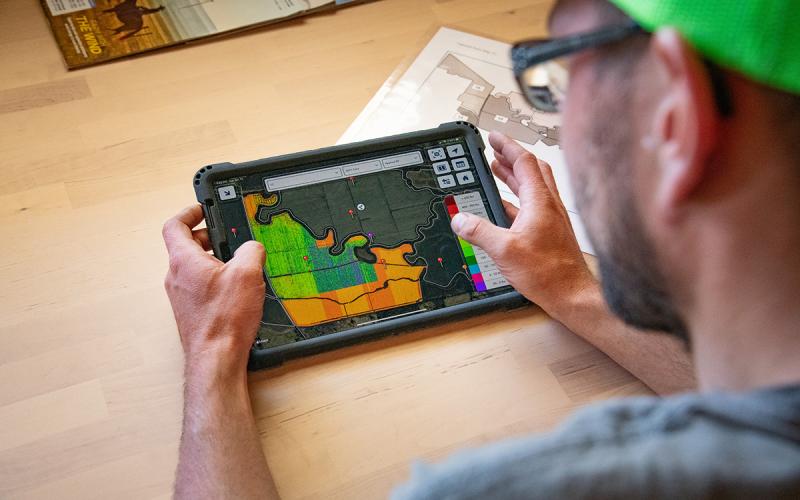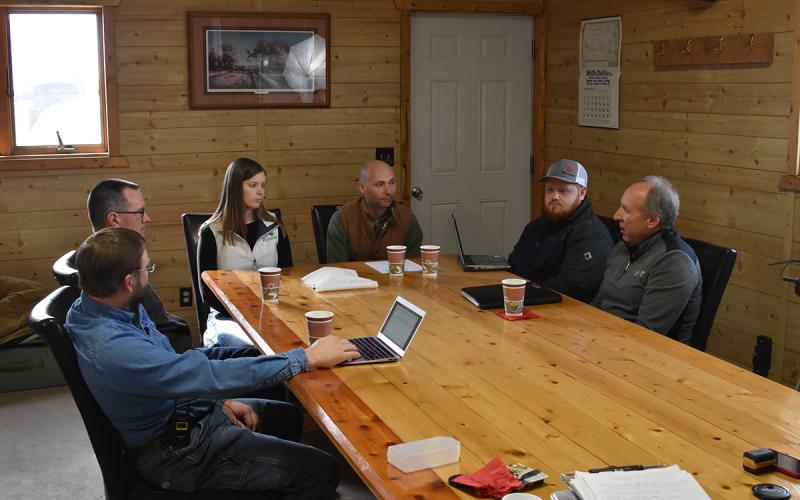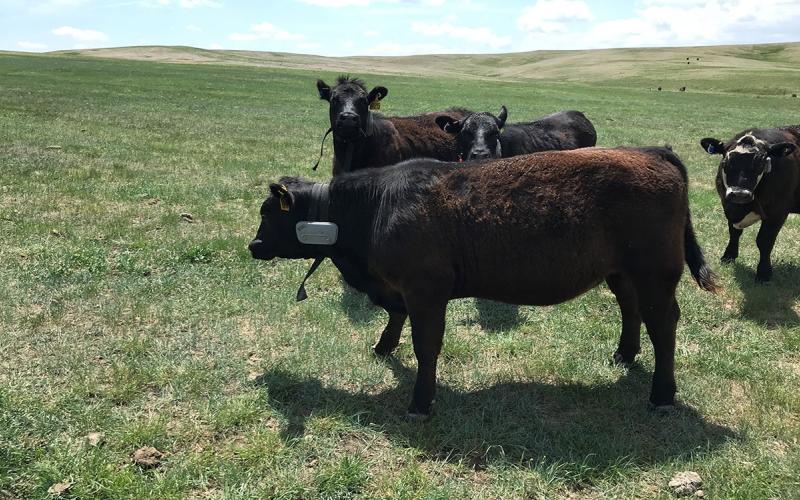
With reliance on digital technologies, precision agriculture requires securing data and implementing key strategies to safeguard digital assets and maintain operational integrity and confidentiality. Standardized frameworks offer structured approaches to securing information systems. Some examples of these frameworks are ISO/IEC (International Organization for Standardization (ISO) and the International Electrotechnical Commission (IEC)) 27001 and the National Institute of Standards and Technology (NIST) Cybersecurity Framework in precision agriculture, producers and businesses organizations must also adopt proactive risk management, including regular assessments, multi-layered security, and incident response plans to reduce cyber risks.
Toolkits Available
Data encryption encodes information, and only with the correct decryption key can it be accessed. It secures data at rest (e.g., on hard drives or databases) and in transit (e.g., via HyperText Transfer Protocol Secure or HTTPS), with end-to-end encryption ensuring only the sender and recipient can read the data. The main goal is to prevent unauthorized access, theft, or tampering. Authentication and access control further protect systems by verifying user identity through methods like passwords, two-factor authentication (2FA), and multi-factor authentication (MFA), which combines something the user knows, has, or is. Challenges include balancing security with usability, scaling systems as organizations grow, and mitigating insider threats. Regular software updates and automated patch management (software tools that find, download, test, and install updates patches forr operating systems and applications without manual effort) can enhance performance and maintain robust security.
Unauthorized access to the farm operation data can disrupt the application of inputs, compromising site-specific application. Advanced technologies like GPS, Internet of Things (IoT), and automation introduce new cyber vulnerabilities in precision agriculture. For example, as GPS is used to maintain accurate row spacing and depth consistency, broadcasting false GPS signals (GPS spoofing) that are stronger than the actual GPS signals may mislead the GPS receivers. Unauthorized data manipulation, such as changing irrigation settings, can harm crop quality and increase costs.
Safeguard the Future
Even secure systems are not immune to disruptions from cyberattacks, natural disasters, or technical failures. To ensure resilience and maintain trust in the face of unforeseen events, precision agriculture needs to extend beyond prevention and embrace disaster recovery planning and strategies that can safeguard operations. To reduce cyber threats and prevent unauthorized access, use the services that implement the following measures:
- Use encrypted GPS, MFA, and secure communication networks;
- Install firewalls/intrusion detection and regularly update software and firmware;
- Train all personnel involved in agricultural operations in potential cyber threats and proper security practices; and
- Create a rapid response plan to restore operations during incidents.
Disaster Recovery Planning

Disaster recovery planning helps organizations minimize downtime resulting from cyberattacks, system failures, natural disasters, or human-caused incidents. Common causes of disasters include malware attacks, ransomware, hardware malfunctions, data corruption, weather-related disasters, , or human error. The consequences can be severe, including economic losses, interruptions, financial and customer trust losses, data breaches, and reputational damage. Effective disaster recovery planning would include alternative workflows, rapid system restoration, regular data backups, and clear recovery strategies to help prevent or mitigate similar outcomes.
Key steps to implement the recovery plan:
- Conduct risk assessments to identify risk factors, such as system functions and components that are time-sensitive and could cause severe damage if not quickly restored. It needs to prioritize based on sensitivity and impact according to their recovery priority (e.g., high, medium, low) based on the severity and immediacy of potential impacts.
- Develop strategies and plans that align with business needs and are economically viable. Based on these strategies, develop clear and detailed plans that include roles and responsibilities, step-by-step recovery procedures, and communication plans. Communication plans include clearly defined communication channels, stakeholder lists, escalation procedures, and external contacts for vendors, partners, or emergency services.
- Regularly maintain, review, and update the strategies and plans. This includes conducting simulations to validate effectiveness, training personnel, identifying areas for improvement, documenting lessons learned from actual incidents or tests, and integrating this feedback into revised strategies and plans to improve preparedness continually.
Security Awareness Training
Phishing, social engineering, and poor configurations can lead to serious risks. Interactive, practical training using real-life examples can keep staff engaged and updated on evolving threats. Commodity groups can develop shared toolkits, offer industry-wide training, and promote best practices. Individual producers should prioritize basic digital hygiene and use trusted resources to learn more about cybersecurity, such as the USDA, Extension services, and peer networks. All stakeholders can strengthen cybersecurity by leveraging public-private partnerships, university programs, and practical education to stay ahead of evolving threats.
Farmers can strengthen cybersecurity by focusing on six key areas:
- Basic cyber hygiene practices:
- Use strong passwords
- Update software
- Secure Wi-Fi (Avoid using public or unsecured Wi-Fi networks for managing farm operations or transmitting sensitive data).
- Using services that provide secure technologies:
- Use encrypted communication channels for transmitting sensitive data.
- Use MFA that adds a layer of security beyond just passwords.
- Use secure methods like VPNs (Virtual Private Networks).
- Value services that provide system monitoring:
- Vulnerability assessments: Conduct regular audits of farm technology systems. This might involve hiring cybersecurity professionals to perform the assessments.
- Set up monitoring tools to detect unusual activities.
- Data Backup:
- Regularly back up important data, and store backups in a secure location separately.
- Develop and regularly update a disaster recovery plan that includes steps to restore systems and data.
- Collaboration:
- Share insights and consult cybersecurity professionals (including cybersecurity professionals in Univercities IT Security Office and private IT firms like that offer managed cybersecurity services).
- Cybersecurity Training:
- Attend workshops and training sessions to stay current.
Conclusion
By adopting these practices, farmers and agricultural organizations can create a more resilient digital environment, protecting operations, ensuring productivity, and securing the food supply chain.
References and Additional Resources
- Maraveas, C., Rajarajan, M., Arvanitis, K. D., & Vatsanidou, A. (2024). Cybersecurity threats and mitigation measures in agriculture 4.0 and 5.0. Smart Agricultural Technology, 100616.
- Small Business Cybersecurity Corner, National Institute of Standards and Technology.
- Burbank, J., Greene, T., & Kaabouch, N. (2024). Detecting and Mitigating Attacks on GPS Devices. Sensors, 24(17), 5529.
- Protecting Your Data: The Role of Authentication and Encryption in Agricultural Cybersecurity, SDSU Extension.
- The Growing Threat of Cyber Attacks in Agriculture, SDSU Extension.
- The growing cyber threat within modern agriculture, Crawford & Company.


